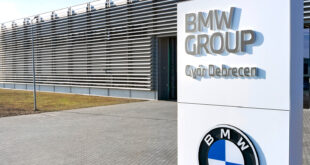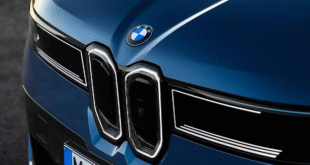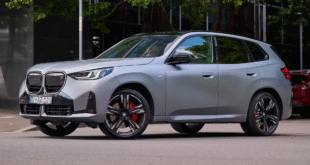BMW has had a particularly storied history of producing some of the finest engines to ever grace our streets. Take the M10 from the 1960s: a simple, over-engineered four-cylinder that powered everything from the everyday 1502 to the 2002 Turbo. It wasn’t the biggest or flashiest engine, but it was reliable, tunable, and in the right application, chock full of character.
By the 1970s, BMW’s engineering had matured into something even more refined with the M30. This straight-six, affectionately known as the “Big Six,” powered cars ranging from the E3 sedans to the legendary 3.0 CSL, BMW’s lightweight coupe built for Group 2 racing. Robust, smooth, and torquey, the M30 wasn’t just a street engine; it was a winner on the track, helping BMW secure multiple European Touring Car Championship titles, while also earning accolades as one of the most significant engines of the 20th century. The kind of powerplant that perfectly balanced performance, reliability, and character, becoming a defining part of BMW’s DNA.
This dedication to engineering craft has carried through the decades in a wide array of both M and non-M engines. And while some internet-based commentators might argue otherwise, I’d like to nominate their B58 as one of BMW’s all-time greats, a modern-day powerhouse that continues this legacy of refinement, responsiveness, and sheer driving joy. Here is a silky-smooth, punchy 3-litre Straight-six with a closed-deck aluminium block, aluminium cylinder head with double overhead cams, boasts a compression ratio of 11.0:1, direct fuel injection at 200 bar, and an integrated water-to-air intercooler within the intake manifold, a BorgWarner twin-scroll turbocharger with an integrated wastegate actuator, double VANOS, Valvetronic, and a 7,000 rpm redline.



What all that mumbo-jumbo really means is this: drop this engine into any car, and its personality is instantly evolves. We’ve seen it happen time and again, BMW or otherwise, turning every machine it powers into something sharper, livelier, and downright addictive, with an extra hit of dopamine every time you bury the throttle. Today, we succumb to that addiction once again with the X3 M50.
We recently drove the latest X3, and while much of it feels familiar, the biggest difference, aside from the extra S$90,000 premium, lies under the bonnet. And while that might not sound like much, shoehorning a B58 into BMW’s latest SAV completely transforms its character, imbuing it with a livelier, more engaging personality that announces itself the moment you press the starter button and hear that creamy 393 horsepower straight-six purr into life with a pulsating beat.

Give the go-pedal a good shove and 100 km/h is gone in 4.6 seconds, aided no-doubt by xDrive sending all four wheels to work as it slams 580 Nm onto the tarmac, smoothly punching its way up to its electronically limited top speed of 250 km/h.



It’s no slouch in the bends either. Equipped with M Adaptive suspension, it’s more than capable of holding the G45 steady through long sweepers and performing quick directional changes with ease. That said, like its 2-litre sibling, the steering, while sharp and responsive, still feels too light, with feedback falling short for a vehicle with such performance credentials. There’s not quite enough bite when loading into a corner, and I found myself making mid-corner adjustments on several turns to correct an overly eager entry angle. On top of that, the X3’s slightly generous physical dimensions can make navigating tight local roads a tricky affair, requiring a fair bit of caution. Give it time, and you’d get a better sense of its size, or perhaps it’s a car best driven with a touch more sensibility.

While sense and sensibility may be qualities many motoring journos lack, it does allow us to uncover another side of the X3’s character: its ride. With the adaptive suspension dialed back into Normal/Comfort mode, the hard-cornering springs and shocks ease up just enough to deliver genuinely decent comfort, even when equipped with larger wheels in the M Sport trim. With an M50 badge on the rear, there’s always an underlying stiffness, but it’s softened enough to smooth out many of the bumps and undulations that frequently crop up on local roads.




With our excitement levels dialed down, it also gives us a chance to enjoy the interior. Unfortunately, just like the X3 xDrive20 we tested earlier, while the latest X3’s cabin might look great in pictures, and even better in real life, especially with our car’s absolutely beautiful Merino Leather seats (no Veganza here!), the materials in other areas leave much to be desired, even in the M50. Harsh plastics and odd control placements often tarnish, or even overshadow, what would otherwise be a rather charming interior. On a slightly positive note, we hear this has been common feedback globally, and BMW has clearly taken notice.



Beyond materials and finishes, the X3 M50’s cabin still feels very much like a driver’s domain. The very responsive curved display, stretching across a 12.3-inch digital instrument cluster and a 14.9-inch central infotainment screen, keeps everything you need right in front of you. The iDrive controller is still there too, which is nice if you like tactile feedback amidst all the touchscreen gestures. Though I’ll admit, some of the menu options still feel very much buried, and you might find yourself swiping or scrolling a few times too many while on the move and with little in the way of customisation, could be a cause for frustration.

Practicality hasn’t taken a back seat. The boot offers 570 liters with all seats up, and a whopping 1,700 liters with them folded down. Rear passengers enjoy plenty of legroom and headroom, and the three-zone climate system keeps everyone happy.




Styling-wise, the latest X3 might not grab headlines like a full-on M car, even in M Performance trim, but it quietly does its job. Slightly larger kidney grilles, a sculpted front bumper, muscular wheel arches, and sleek rear lights give it a presence that’s confident, purposeful, and just enough to make you take notice without trying too hard. From most angles, it feels like an SUV that’s ready to perform, not just sit pretty.
And that’s really the story of the X3 M50: beneath that polished exterior lies an engine that transforms its character, just as BMW has done for decades — from the humble M10 to the Big Six M30, and now the silky, addictive B58. It’s a reminder that for many, the heart of a BMW has always been its engines, and the way they make you feel behind the wheel… and I have to say, it felt pretty damn good.
For now, the X3 M50 is a compelling, addictive, and surprisingly capable SAV with a charming powerplant that almost makes you forget about the mismatched interior materials. Still, with a rather sizeable price differential, it’s something worth weighing carefully before putting pen to paper.
That said, while the X3 M50 is undeniably impressive, there’s a part of me that can’t help but look ahead. If you can hold out, the upcoming facelift, bringing BMW’s Neue Klasse tech, promises refinements across the board: smarter, more efficient powertrains, a more cohesive interior, and perhaps an even sharper, more connected driving experience. For now, the X3 M50 is a deeply satisfying machine, but the future? That looks just a tad more exciting.
 BMW.SG | BMW Singapore Owners Community The Ultimate BMW Community – Established Since 2001
BMW.SG | BMW Singapore Owners Community The Ultimate BMW Community – Established Since 2001













